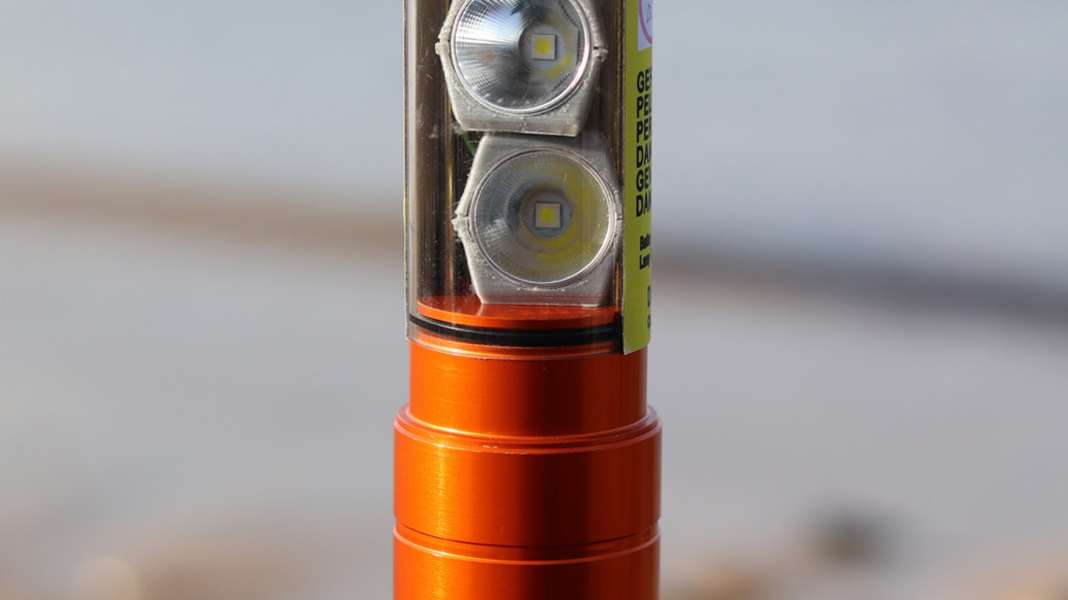
The Ultraflare Daylight sets new standards for electronic distress lights. With more than 7,000 lumens, it far surpasses conventional LED signalling lights. Thanks to its powerful luminosity, it is visible for up to three nautical miles, even in daylight. This makes the Ultraflare Daylight a practical alternative to pyrotechnic signalling rockets.
Withstands even harsh conditions
The robust aluminium housing is IP67 waterproof and shockproof. Thanks to its handy size, the Ultraflare Daylight can be easily stowed in life jackets or emergency kits. It is operated via a single push button. Various light modes such as SOS, continuous light or flashing can be selected.
Unlike signalling rockets, the Ultraflare Daylight can be tested before use. This significantly increases reliability in an emergency. The light is rechargeable and environmentally friendly. The disadvantage of pyrotechnics compared to LED flares is the very short burning time (30 seconds to 1 minute) and the high risk of fire and injury.
More on the topic:
LED torch brighter than a projector
In SOS mode, the Ultraflare achieves an average luminous flux of over 7,000 lumens. This is roughly equivalent to the luminosity of a signal rocket. The battery life is one hour. Spare batteries or power banks are recommended for longer emergencies. For comparison: 100 to 500 lumens are recommended for a torch for outdoor use. Projectors, for example, have 7,000 lumens and can be used to project an image even in daylight.
The white LED light colour of the Ultraflare Daylight offers better visibility during the day than red light. The 45 degree wide horizontal beam angle ensures good all-round visibility. In addition, you don't shine the light in your own eyes. The 15 degree narrow vertical angle optimises visibility for search aircraft.
At a price of 235 euros, the Ultraflare Daylight is significantly more expensive than pyrotechnic signalling devices. However, the costs are relativised over several years due to its reusability. In addition, there are no disposal costs for expired signalling rockets.
